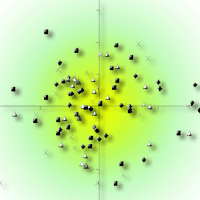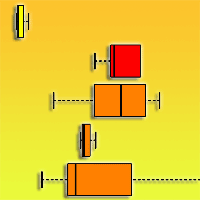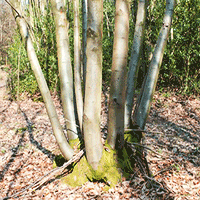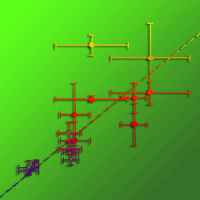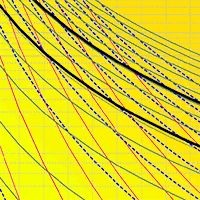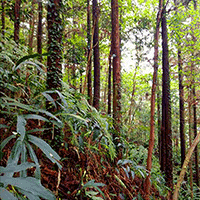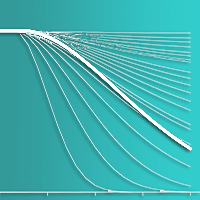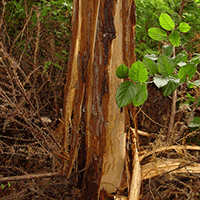
Interactions between thinning and bear damage complicate restoration in coast redwood forests
Kevin L O’Hara (1) , Lakshmi Narayan (1), Lathrop P Leonard (2)
iForest - Biogeosciences and Forestry, Volume 13, Issue 1, Pages 1-8 (2020)
doi: https://doi.org/10.3832/ifor3135-012
Published: Jan 08, 2020 - Copyright © 2020 SISEF
Research Articles
Abstract
Silviculture was used to direct the development of young redwood stands toward old forest stand structures. Two variable-density thinning treatments and an unthinned control treatment were monitored for 10 years following treatment in young coast redwood (Sequoia sempervirens) stands in northern California, USA. The intent of these treatments was for forest restoration by accelerating the development of old forest features. The thinning treatments increased individual tree growth in both low and moderate density thinning treatments as compared to the control. The variable-density thinning also resulted in greater stand structural variability and was successful at increasing the relative proportion of redwood. Black bears (Ursus americanus) caused major damage to residual trees and showed a preference for more vigorous trees. Most of this damage occurred in the first four years after thinning. The confounding effects of thinning to favor larger trees and bear damage preferentially affecting more vigorous and large trees reduced the effectiveness of these treatments by eliminating the stems intended to form the future old forest structures. It also indicates forest managers need a conservative approach that leaves greater numbers of residual trees in redwood stands when bears are present. Thinning should leave sufficient trees to form the old forest structure plus ample allowances for bear-caused mortality. The long-term outcome of stand development in these thinned redwood forests is uncertain because of high rates of mortality in young trees.
Keywords
Sequoia sempervirens, Restoration, Variable-Density Thinning, Precommercial Thinning, Silviculture, Ursus americanus
Authors’ Info
Authors’ address
Lakshmi Narayan
Department of Environmental Science, Policy and Management, University of California, Berkeley, CA 94720-3114 (USA)
California Department of Parks and Recreation, Crescent City, CA 95531 (USA)
Corresponding author
Paper Info
Citation
O’Hara KL, Narayan L, Leonard LP (2020). Interactions between thinning and bear damage complicate restoration in coast redwood forests. iForest 13: 1-8. - doi: 10.3832/ifor3135-012
Academic Editor
Emanuele Lingua
Paper history
Received: Apr 23, 2019
Accepted: Oct 17, 2019
First online: Jan 08, 2020
Publication Date: Feb 29, 2020
Publication Time: 2.77 months
Copyright Information
© SISEF - The Italian Society of Silviculture and Forest Ecology 2020
Open Access
This article is distributed under the terms of the Creative Commons Attribution-Non Commercial 4.0 International (https://creativecommons.org/licenses/by-nc/4.0/), which permits unrestricted use, distribution, and reproduction in any medium, provided you give appropriate credit to the original author(s) and the source, provide a link to the Creative Commons license, and indicate if changes were made.
Web Metrics
Breakdown by View Type
Article Usage
Total Article Views: 43332
(from publication date up to now)
Breakdown by View Type
HTML Page Views: 36862
Abstract Page Views: 2806
PDF Downloads: 2833
Citation/Reference Downloads: 9
XML Downloads: 822
Web Metrics
Days since publication: 2169
Overall contacts: 43332
Avg. contacts per week: 139.85
Citation Metrics
Article Citations
Article citations are based on data periodically collected from the Clarivate Web of Science web site
(last update: Mar 2025)
(No citations were found up to date. Please come back later)
Publication Metrics
by Dimensions ©
Articles citing this article
List of the papers citing this article based on CrossRef Cited-by.
References
Current status and distribution of coast redwood. In: Proceedings of the Conference “Coast Redwood Forest Ecology and Management” (Leblanc J ed). Humboldt State University (Arcata, CA, USA), pp. 18-20.
Gscholar
Variable-density thinning for parks and reserves: an experimental case study at Humboldt Redwoods State Park, California. In: Proceedings of the 2009 National Silviculture Workshop: “Integrated Management of Carbon Sequestration and Biomass Utilization Opportunities in a Changing Climate” (Jain TB, Graham RT, Sandquist J eds). Proc. RMRS-P-61, USDA Forest Service, Fort Collins, CO, USA, pp. 227-237.
Online | Gscholar
Site index systems for major young-growth and woodland species in northern California. Forest Report no. 4, California Dept. of Forestry and Fire Protection, CA, USA, pp. 219.
Gscholar
Precommercial stocking control of coast redwood at Caspar Creek, Jackson Demonstration State Forest. In: Proceedings of the “Redwood Region Forest Science Symposium: What Does the Future Hold?” (Standiford RB, Giusti GA, Valachovic V, Zielinski WJ, Furniss MJ eds). Gen. Tech. Rep. PSW-GTR-194, USDA Forest Service, Pacific Southwest Research Station, Albany, CA, USA, pp. 295-304.
Gscholar
The redwood forest: history, ecology, and conservation of the coast redwoods. Island Press, Washington, DC, USA, pp. 339.
Gscholar
Forest stand dynamics (update edn). John Wiley and Sons, New York, USA, pp. 520.
Gscholar
Structure and dynamics of an upland old-growth forest at Redwood National Park, California. In: Proceedings of the “Redwood Region Forest Science Symposium: What Does the Future Hold?” (Standiford RB, Giusti GA, Valachovic V, Zielinski WJ, Furniss MJ eds). Gen. Tech. Rep. PSW-GTR-194, USDA Forest Service, Pacific Southwest Research Station, Albany, CA, USA, pp. 333-343.
Online | Gscholar
Whiskey Springs long-term coast redwood density management; Final grown, sprout, and yield results In: “Proceedings of the Redwood Region Forest Science Symposium: What Does the Future Hold?” (Standiford RB, Giusti GA, Valachovic V, Zielinski WJ, Furniss MJ eds). Gen. Tech. Rep. PSW-GTR-194, USDA Forest Service, Pacific Southwest Research Station, Albany, CA, USA, pp. 571-581.
Online | Gscholar


